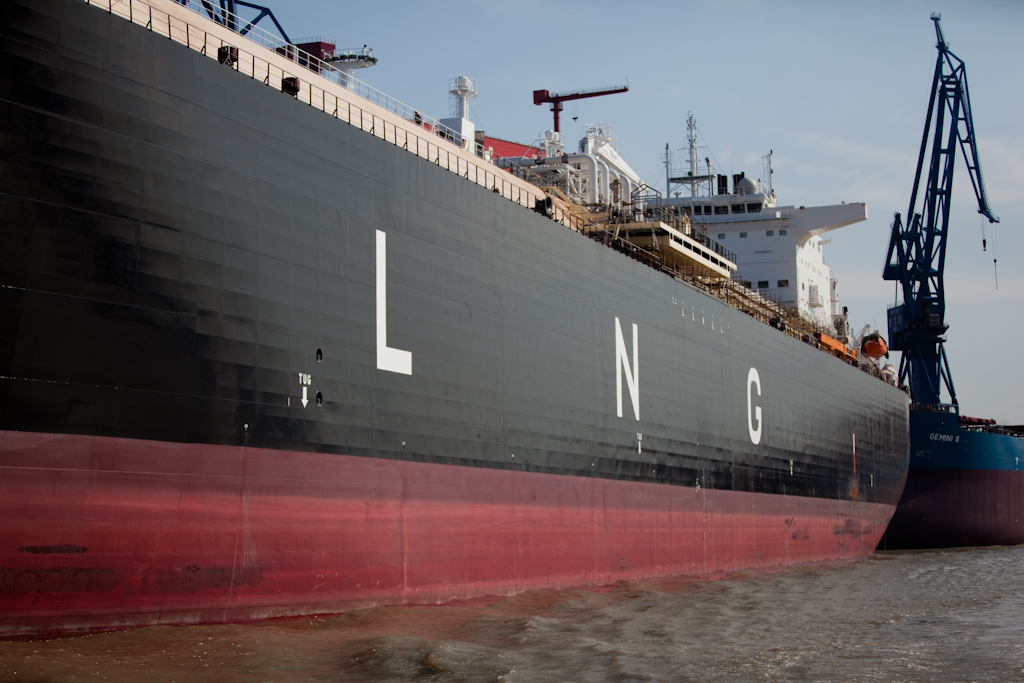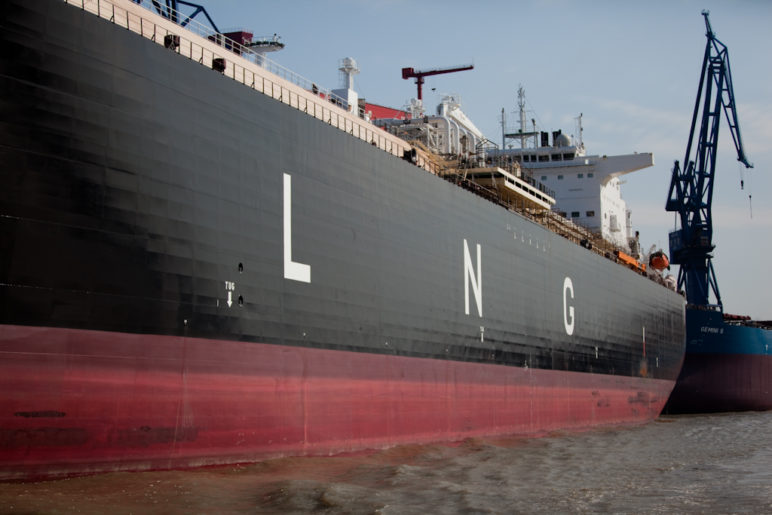Even now that Shell has announced its decision to discontinue further development on the Prince Rupert LNG project, there are still nineteen LNG export proposals pending in British Columbia. Five of the proposals are on the Salish Sea, four are clustered at Kitimat, six near Prince Rupert, and another four are proposed north of Prince Rupert. While the sheer number of proposals is striking (Washington and Oregon combined have seen only four LNG proposals in the last decade), the combined production capacity of the proposals is stunning.
If the nineteen proposals were to go forward, the province would become the world’s largest LNG exporter—by a long shot. According to the International Gas Union’s 2016 World LNG Report, the top LNG-exporting countries are Qatar and Australia. Qatar, which is located on the Persian Gulf near Saudi Arabia, has been the world’s largest LNG exporter for a decade. Producing 78 million metric tons of LNG, Qatar claimed about 32 percent of the global LNG market share in 2015. Australia produced the second largest global market share at 12 percent, exporting 29.4 million metric tons of LNG in 2015.
The planned production capacity of BC’s LNG proposals dwarfs the world’s top LNG exporters.

Original Sightline Institute graphic, available under our free use policy.
In aggregate, the LNG proposals in BC would produce more than 270 million metric tons of LNG per year, three-and-a-half times the volume exported from Qatar and nine times the volume exported by Australia. In fact, the production capacity of the BC proposals rivals that of all the LNG production capacity in the world in 2015, which was 301.5 million metric tons.
Even if only the projects proposed for the Prince Rupert area advanced, BC would still produce 109 million metric tons of LNG—slightly more than world leaders Qatar and Australia combined.

Original Sightline Institute graphic, available under our free use policy.
The provincial government hopes to have three plants in operation by 2020—a rather ambitious expectation given that none of the projects has actually begun construction and that experts estimate it takes about five years to build large export facilities like these. Plus, there are any number of unfavorable conditions in the LNG market, making it difficult for the project backers to secure the long-term contracts necessary for their financing. While no one expects all nineteen remaining projects to move forward, it’s worth understanding the province’s ambitions in the context of world LNG exports—they are truly titanic.
Note and methods: Data for LNG production volumes in BC are drawn from multiple sources that are cited extensively in Sightline’s March 2017 report on the industry, Mapping BC’s LNG Proposals. Since one of the projects (Nisga’a LNG) has not applied for an export permit, its export capacity is not known. This analysis includes 18 of the 19 remaining proposals.











Don Steinke
Thanks Tarika. Great job as usual. One proposal would take natural gas from Sumas and go straight west across Puget Sound to the Malahat property on Vancouver Island for LNG export. Other tribes are opposed to the proposal. See Malahat LNG if interested.
Keith Barger
Natural gas still contributes to climate change. If BC pursues this rather than a “leave it in the ground” policy, then BC will be prioritizing short term economic gain over climate change. Not a good choice.
Irvin Dawid
“Leave it in the ground” won’t work for a far worse fossil fuel, oil sands, so why should it work for a clean-burning fuel that can replace coal?
See Planetizen: Canadian Prime Minister Wins Award for Being Pro-Oil Sands and Pro-Environment, March 14, 2017
Thomas Chan
Nope. Certainly not at current LNG price points, with restrictive costs of implementing infrastructure, and not realistically in the foreseeable future with current competitive market sources, plus the onset of vast petroleum liquids and gas production (over 20 billion barrels and 16 trillion cubic feet estimated — USGS) from West Texas’ Permian Basin as expected over the next decade.
That is, not without substantial foreign producers’ write-downs via huge subsidies, courtesy of our development-at-all costs B.C. Liberal government, i.e. at the expense of B.C. taxpayers and consumers.
Carol
https://watershedsentinel.ca/articles/bc-lng-reality-check/
Jim Cooper
When Australia, with a developed LNG export industry, is encountering problems with long-term weak market conditions, it takes an idiot like Christy Clark to push on with her LNG fantasy.
She has given away the store, all the inventory and free power forever but still nothing built. What more does she need to recover from her moronic hallucination?
G. Barry Stewart
The province is already making next to nothing on royalties from gas extraction and land sales. Why would we want to continue along this path?
The timing is so very wrong. Keep the gas for normal residential and business use in North America. Do not add extra efforts and expense into producing a product that the world does not want… at least not at a price that would benefit BC.
https://in-sights.ca/2016/08/03/bc-natural-gas-400m-loser-in-2016/
Jef Keighley
The Christy Clark Liberal government is completely delusional with respect to LNG. They came to the party late, with limited knowledge, no global experience or acumen and manufactured a too-good-to-true fantasy out of whole cloth and now are desperately trying to sew a silk purse from a sow’s ear. We will not see any major LNG developments unless Christy & Co. are re-elected and they agree to effectively underwrite any potential losses the industry may encounter with public resources slid sideways into corporate coffers to investment incentives, tax breaks, subsidized power and the like. Fortunately, it appears that Christy & Co. are heading to defeat on May 9th and the NDP will form the next government. While the NDP will not be perfect, they will apply far greater scrutiny to the LNG file and will not give away the farm. Consequently, the Christy’s LNG fantasy will be exposed for what it always was and will save us from the Liberal nightmare. Nevertheless, you can count on the Liberals to beat the drum and claim that but for the NDP coming to power, their fantasy would have produced great things for BC if only they had been re-elected.